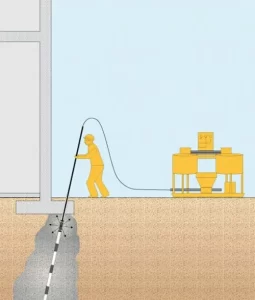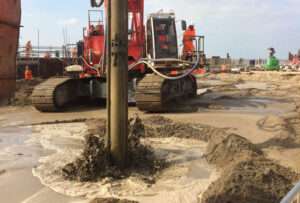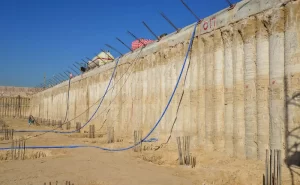Ground improvement techniques are essential in modern construction to enhance the physical properties of soil and ensure the stability and safety of structures built on it. These techniques address challenges posed by weak, compressible, or unstable soil conditions, providing viable solutions for a wide range of projects. Below, we explore various ground improvement methods, their benefits, and typical applications.
Why Ground Improvement Is Necessary
In many construction projects, the natural ground may not possess the required strength, stiffness, or stability to support structural loads. Weak soil can lead to excessive settlement, slope instability, or even structural failure. Ground improvement techniques modify soil properties to meet project-specific requirements, allowing safe and economical construction in challenging conditions.
Common Ground Improvement Techniques
1.Compaction
-
- Description: Increases soil density by reducing void spaces through mechanical means.
- Methods:
- Static rolling using heavy equipment.
- Dynamic compaction with falling weights.
- Vibro-compaction using vibratory probes.
- Applications: Ideal for granular soils such as sand and gravel.
2.Soil Stabilization
-
- Description: Enhances soil properties by mixing it with stabilizing agents.
- Materials Used: Lime, cement, fly ash, or chemical additives.
- Applications: Common in road construction and subgrade preparation.
3.Grouting
-
- Description: Injecting grout materials into soil to fill voids and improve strength.
- Types of Grouting:
- Permeation grouting (low-pressure grout injection).
- Jet grouting (high-pressure grout injection).
- Applications: Strengthening foundations, sealing groundwater seepage, and stabilizing loose soil.
4.Vibro-Replacement (Stone Columns)
-
- Description: Installing columns of compacted aggregate into the ground to increase bearing capacity and reduce settlement.
- Process: A vibratory probe displaces soil, and aggregate is added and compacted in layers.
- Applications: Used in cohesive soils like clay and silt.
5.Geosynthetics
-
- Description: Incorporating synthetic materials like geotextiles, geogrids, and geomembranes to reinforce and stabilize soil.
- Benefits: Provides separation, filtration, drainage, and reinforcement.
- Applications: Embankments, retaining walls, and road construction.
6.Deep Soil Mixing
-
- Description: Blending soil in situ with binders to improve its strength and stiffness.
- Process: A mixing tool injects and mixes cementitious materials into the soil.
- Applications: Foundation support and excavation stability.
7.Prefabricated Vertical Drains (PVDs)
-
- Description: Accelerates consolidation of soft soils by providing drainage paths for water.
- Process: PVDs are installed vertically to expedite the dissipation of excess pore pressure.
- Applications: Land reclamation and preloading projects.
8.Electro-Osmosis
-
- Description: Uses electric currents to remove water from fine-grained soils, increasing stability.
- Applications: Slope stabilization and construction in areas with high groundwater.
Benefits of Ground Improvement Techniques
- Enhanced Bearing Capacity: Strengthens the soil to support heavier loads.
- Reduced Settlement: Minimizes differential and total settlement.
- Increased Stability: Prevents slope failures and landslides.
- Improved Durability: Ensures long-term performance of structures.
- Cost Efficiency: Reduces the need for deep foundations or extensive excavation.
Applications of Ground Improvement
Ground improvement techniques are widely used in:
- Infrastructure Development: Roads, bridges, and railways.
- Industrial Projects: Factories, warehouses, and power plants.
- Urban Construction: High-rise buildings, basements, and underground facilities.
- Marine and Offshore Projects: Ports, harbors, and oil platforms.
Conclusion
Ground improvement techniques play a crucial role in modern construction, enabling safe and sustainable development even in challenging soil conditions. By tailoring methods to site-specific requirements, engineers can overcome geotechnical challenges and ensure the stability and longevity of structures. As the demand for innovative and efficient solutions grows, ground improvement technologies continue to evolve, setting the foundation for resilient infrastructure.







